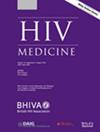Sex differences in the effectiveness and tolerability of dolutegravir plus rilpivirine as a switch strategy in people living with HIV
Abstract
Introduction
Dolutegravir + rilpivirine (DTG + RPV) is an effective antiretroviral therapy regimen approved in clinical guidelines as a switch therapy for virologically suppressed people with HIV. Our study aimed to compare the effectiveness and tolerability of DTG + RPV in women and men in real-world clinical practice.
Methods
This was a retrospective analysis of treatment-experienced people with HIV from a large HIV unit who switched to DTG + RPV. We analysed treatment effectiveness, rates of adverse events and discontinuation, and metabolic changes after 48 weeks of treatment. HIV-RNA levels <50 copies/mL were analysed at 48 weeks using both intention-to treat analysis (where missing data were interpreted as failures) and per-protocol analysis (excluding those with missing data or changes due to reasons other than virological failure). Outcomes were compared between women and men based on sex at birth.
Results
A total of 307 patients were selected (71 women and 236 men). No transgender people were included. At baseline, women had lived with HIV infection and received antiretroviral therapy for longer than men (23.2 vs 17.4 years and 18.9 vs 14.2 years, respectively). In the intention-to-treat analysis, 74.6% (95% confidence interval [CI] 63.4–83.3%) of women and 83.5% (95% CI 78.2–87.7) of men had HIV-RNA <50 copies/mL. In the per-protocol analysis, 96.4% (95% CI 87.7–99) of women and 99% (95% CI 98.9–99.7) of men had HIV-RNA levels <50 copies/mL. Two women and two men had HIV-RNA >50 copies/mL at 48 weeks. Discontinuation due to adverse events was more frequent in women than in men: 12.7% vs 7.2% (p < 0.02). Neuropsychiatric and gastrointestinal events were the most frequently reported. A median (interquartile range) weight gain of 1.9 kg (0–4.2) in women and 1.2 kg (−1–3.1) in men was reported (median of differences between baseline visit and week 48); the remaining changes in metabolic parameters were neutral.
Conclusions
DTG + RPV exhibited good and similar virological effectiveness in women and men in real-world settings. However, poorer tolerability and more treatment interruptions were observed in women.

 求助内容:
求助内容: 应助结果提醒方式:
应助结果提醒方式:


